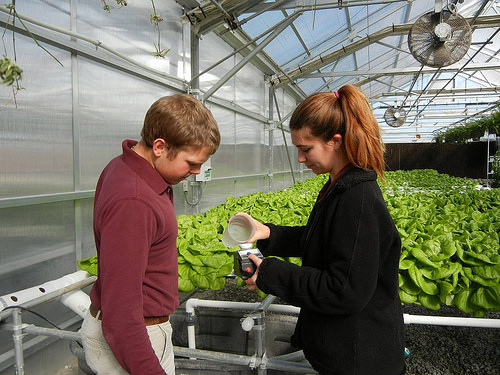Jackson-Madison County Schools Demonstrate the Power of Youth Engagement
Ed. Note: This is a cross post from the blog of usda.gov. You can find the original post here.
In today’s installment of our Cafeteria Stories series, we highlight the innovative and successful school nutrition strategies that a Tennessee school district is using to positively impact the health of our next generation. I believe very strongly in the power of student engagement, and the Jackson-Madison County School District is expertly tapping into that resource. By empowering students and integrating them into the program structure, they have altered food culture and made the healthy choice the desirable choice within and outside of the school walls. We thank them for sharing their story!

Jackson-Madison County School System School Nutrition Director Susan Johnson and School Nutrition Field Managers Rena Harris, Betty Willingham, and Susie Murchison. Credit: Jackson-Madison County School System
Guest Blog By: Susan Johnson, School Nutrition Director of Jackson-Madison County School System
Sometimes I hear people say that kids don’t like the healthy foods they are served at school, but what I see every day in the 27 schools that make up the Jackson-Madison County School System tells me otherwise. My staff and I see our students choosing to not only eat, but also grow fruits and vegetables, and educate others about the benefits of making healthy choices daily.
At our schools, we are committed to maintaining high standards for the food that we serve to students so that they can flourish in and outside of the classroom. In 2008, our district set minimum nutrition standards for food offered to students in grades PreK-8, which put us on the right track to comply with the USDA’s school meals standards and the Smart Snacks in School nutrition standards, which went into effect this summer. Enrolling in the Alliance for a Healthier Generation’s Healthy Schools Program provided us with specific tools, such as the Smart Snacks Product Calculator, that enabled us to not only meet, but exceed, federal standards at our schools today.
Through nutrition education, we’ve created a culture of health where our students are so excited about serving fresh, healthy foods at school, that now Liberty Tech High School students grow much of their cafeteria’s vegetables in the school greenhouse. Last year alone, the students grew 2,664 heads of Bibb lettuce, 573 pounds of cucumbers, and 695 pounds of tomatoes that were supplied to six cafeterias in our school system!

Liberty Tech High School greenhouse. Credit: Jackson-Madison County School System
The USDA Fresh Fruit and Vegetable Program (FFVP) and the “Teens Teaching Tots” programs have also contributed to a 22 percent increase the amount of fruits and vegetables that students eat at school over the last three years. Through the “Teens Teaching Tots” program, high school students take fresh produce from the green house to elementary schools enrolled in the FFVP. The teens teach nutrition lessons while the younger students build and eat salads with their fresh-grown lettuce, tomatoes, and cucumbers.
It’s important to me, as a School Nutrition Director, but also as a member of my community, that kids learn the benefits of making healthy choices at mealtimes. There’s no better place to teach them than at school where they spend the majority of their time away from home. Parents often tell me that in the grocery store, their kids point to strawberries, peaches, and tomatoes and ask for them instead of sugary snacks because they know how healthy and tasty they are from eating them at school. That’s how I know what we’re modeling for kids here is translating into life-long habits that lead to a healthier generation.
